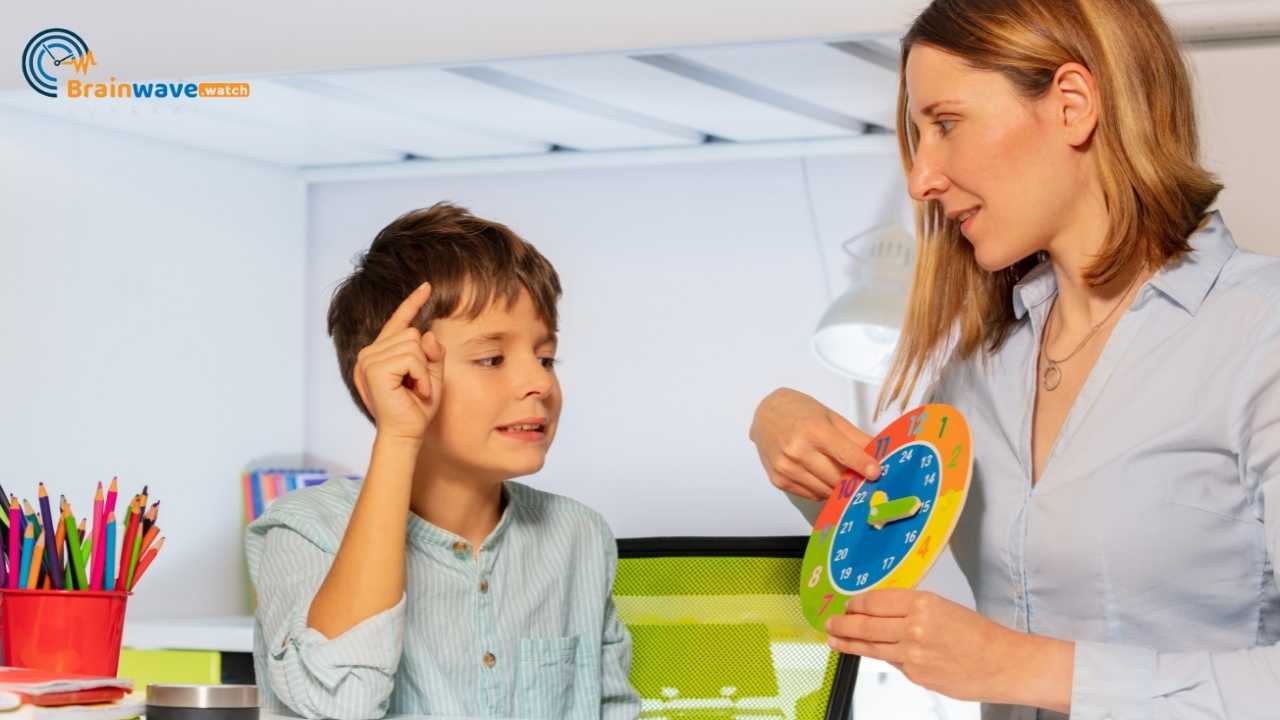Children with hearing loss face unique challenges when it comes to communication. Unlike their peers with normal hearing, they may struggle to understand speech sounds, follow conversations, and express themselves clearly. These difficulties can lead to feelings of frustration, isolation, and low self-esteem. Therefore, it is essential for parents, educators, and speech therapists to actively teach communication skills tailored to the specific needs of children with hearing loss.
Challenges faced by children with hearing loss
Children with hearing loss face unique challenges in their communication development. The impact of hearing loss on their ability to communicate and the barriers they encounter can significantly affect their overall development and well-being.
1. Impact of hearing loss on communication development
Hearing loss has a profound impact on the communication development of children. It affects their ability to acquire language, speech, and social skills. Without proper intervention and support, children with hearing loss may experience delays in language acquisition and struggle to effectively communicate with others.
Language acquisition is crucial for children’s cognitive and social development. However, for children with hearing loss, this process can be more challenging due to their limited access to auditory information. They may have difficulty distinguishing sounds, understanding speech, and developing vocabulary. As a result, they may struggle to express themselves clearly and understand what others are saying.
In addition to language acquisition, hearing loss can also affect speech development in children. Clear hearing is essential for learning how to produce sounds accurately. Children with hearing loss may have difficulty articulating words correctly or speaking at an appropriate volume. This can lead to misunderstandings and frustrations in communication.
2. Barriers to effective communication
Children with hearing loss face various barriers that hinder effective communication. One significant barrier is the lack of access to auditory information. Since they rely heavily on visual cues, such as lip-reading or sign language, it can be challenging for them to understand spoken language without visual support.
Background noise poses another challenge for children with hearing loss. They often struggle to filter out background noise and focus on the speaker’s voice. This can make it difficult for them to follow conversations in noisy environments like classrooms or social gatherings.
Furthermore, social interactions can be overwhelming for children with hearing loss. They may feel isolated or left out when they cannot fully participate in conversations or understand what others are saying. This can negatively impact their self-esteem and confidence in social situations.
The unique challenges faced by children with hearing loss highlight the importance of early intervention and support. By understanding these challenges, parents, educators, and speech therapists can implement effective strategies to help children with hearing loss develop their communication skills and thrive in various settings.
In the next section, we will explore strategies for teaching communication skills to children with hearing loss.
Strategies for teaching communication skills to children with hearing loss
Children with hearing loss face unique challenges when it comes to developing communication skills. However, with the right strategies and support, they can overcome these obstacles and thrive in their ability to communicate effectively. In this section, we will explore various approaches that can be used to teach communication skills to children with hearing loss.
Read also: How to Help Your Child with an Auditory Impairment
Auditory training
One of the most important strategies for teaching communication skills to children with hearing loss is auditory training. This involves helping children develop their listening skills and learn how to interpret sounds effectively. Auditory training can be done through a variety of activities and exercises that are designed to improve a child’s ability to understand speech and other sounds.
There are several components involved in auditory training. First, it is important to help children become aware of different sounds in their environment. This can be done through activities such as sound discrimination tasks, where children are asked to identify and differentiate between different sounds.
Next, children need to learn how to recognize and interpret speech sounds. This can be achieved through activities that focus on phonemic awareness, which is the ability to identify individual speech sounds within words. For example, a child may practice listening for the /s/ sound in words or identifying rhyming words.
Auditory training also involves helping children develop their listening comprehension skills. This includes activities that require them to listen for specific information or follow directions based on what they hear. For instance, a child may be asked to listen to a short story and then answer questions about it or complete a task related to the story.
Read also: How auditory impairment can impact your life
Role of technology in enhancing communication
The role of technology in enhancing communication for children with hearing loss is crucial in helping them overcome the unique challenges they face. Assistive listening devices and augmentative and alternative communication (AAC) systems are two key technologies that can significantly improve their ability to communicate effectively.
1. Assistive listening devices
Assistive listening devices (ALDs) are technological tools designed to enhance sound transmission and clarity for individuals with hearing loss. These devices work by reducing background noise, amplifying sounds, and delivering them directly to the user’s ears. ALDs can greatly benefit children with hearing loss by improving their access to spoken language and facilitating better communication in various environments.
One type of ALD commonly used by children with hearing loss is a personal FM system. This system consists of a transmitter microphone worn by the speaker and a receiver worn by the child. The speaker’s voice is transmitted wirelessly to the child’s receiver, allowing them to hear more clearly even in noisy situations such as classrooms or social gatherings. Personal FM systems help overcome distance and background noise barriers, ensuring that important auditory information reaches the child effectively.
Another type of ALD is an induction loop system. This technology uses electromagnetic signals to transmit sound directly to hearing aids or cochlear implants equipped with telecoils. Induction loop systems are often installed in public spaces like theaters, churches, or airports, enabling children with hearing loss to access clear audio without interference from surrounding noise. By providing direct audio input, induction loop systems improve comprehension and allow children with hearing loss to fully participate in various activities.
2. Augmentative and alternative communication (AAC) systems
For some children with severe or profound hearing loss who struggle with spoken language development, augmentative and alternative communication (AAC) systems offer valuable support. AAC refers to a range of methods and tools used to supplement or replace spoken language for individuals who have difficulty communicating verbally.
AAC systems can take various forms, including picture-based communication boards, electronic devices with pre-recorded messages, or even complex speech-generating devices. These systems provide visual and auditory cues that help children with hearing loss express their thoughts, needs, and desires effectively.
Picture-based communication boards are particularly useful for young children who may not have developed extensive vocabulary yet. These boards contain images representing different words or concepts, allowing children to point to the pictures to convey their message. Electronic AAC devices offer additional flexibility by allowing users to select from a range of pre-recorded messages or type out their sentences using text-to-speech technology.
Speech-generating devices are more advanced AAC systems that enable children with severe communication impairments to produce spoken language. These devices use synthesized voices to generate speech based on the user’s input. By giving children with hearing loss the ability to communicate verbally, speech-generating devices empower them to interact more naturally and confidently in social settings.
Read also: Strategies for Helping Children with Communication Difficulties
Target Audience: Parents

Tips for parents to support communication development
- Early intervention: Parents need to seek early intervention services for their child with hearing loss. This may include working with audiologists, speech-language pathologists, and educators who specialize in deaf education. These professionals can guide how to enhance communication skills from an early age.
- Encourage language exposure: Parents should expose their children to language as much as possible. This can be done by reading books aloud, engaging in conversations, and singing songs together. Regular exposure to language helps children with hearing loss develop vocabulary, grammar, and overall language comprehension.
- Utilize visual cues: Since children with hearing loss rely heavily on visual information, parents should incorporate visual cues into their daily routines. This can involve using gestures, facial expressions, and body language to enhance understanding during conversations.
- Create a supportive environment: Parents need to create an environment that fosters open communication and encourages active participation from their child. This includes actively listening, giving them ample time to respond, and showing patience and understanding.
- Assistive technology: Parents can explore the use of assistive technology devices such as hearing aids or cochlear implants to amplify sound and improve auditory input for their child. They should work closely with audiologists and other professionals to ensure proper fitting and maintenance of these devices.
- Seek support networks: Connecting with other parents who have children with hearing loss can be invaluable for sharing experiences, seeking advice, and finding emotional support. Support networks provide a safe space where parents can learn from others who have faced similar challenges.
By implementing these tips, parents can effectively support the communication development of their children with hearing loss. Parents need to remember that each child is unique, and what works for one may not work for another. Patience, persistence, and a supportive environment are key in helping children with hearing loss thrive and reach their full potential.
Read also: Enhance Social Skills in Children with Developmental Challenges
Target Audience: Educators

One important strategy for educators is to create an inclusive classroom environment that fosters open communication and understanding. This can be achieved by promoting empathy and respect among students, encouraging active listening, and providing opportunities for peer collaboration. By fostering a supportive and inclusive classroom culture, educators can create an environment where children with hearing loss feel comfortable expressing themselves and engaging in meaningful conversations.
Furthermore, educators need to collaborate closely with speech therapists and other professionals who specialize in working with children with hearing loss. By sharing knowledge and resources, educators can gain valuable insights into effective teaching strategies and techniques specific to this population. This collaboration can also help ensure consistency in supporting the development of communication skills across different settings.
Target Audience: Speech Therapists

One of the primary roles of speech therapists is to assess and diagnose communication difficulties in children with hearing loss. They conduct comprehensive evaluations to determine the specific areas of need, such as speech articulation, language comprehension, or auditory processing. By identifying these challenges, speech therapists can develop individualized treatment plans tailored to each child’s needs.
In addition to assessment and diagnosis, speech therapists also provide therapy sessions focused on improving communication skills. They utilize various techniques and strategies to help children with hearing loss develop their speech and language abilities. These may include auditory training exercises, visual cues, sign language, or assistive technology devices like hearing aids or cochlear implants.
Furthermore, speech therapists collaborate closely with other professionals involved in a child’s care, such as audiologists, educators, and parents. This multidisciplinary approach ensures that all aspects of a child’s communication development are addressed effectively. By working together as a team, speech therapists can provide comprehensive support and guidance for children with hearing loss.
Conclusion
In conclusion, teaching communication skills to children with hearing loss requires a multi-faceted approach that involves collaboration among parents, educators, speech therapists, and the use of assistive technology. By implementing effective strategies and creating inclusive environments, we can empower children with hearing loss to communicate effectively, build meaningful relationships, and thrive in all aspects of their lives.






